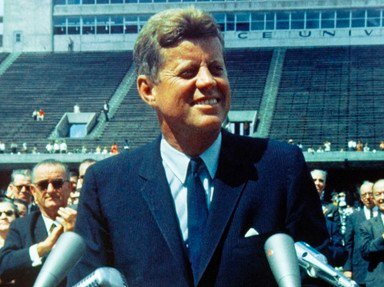Quiz Answer Key and Fun Facts
1. Five days before the assassination, the FBI offices received a telexed message warning of the assassination of the President at the end of the week in Dallas. To which FBI office was the warning first sent to?
2. On November 22, an hour before the murder, a woman was driving west past the grassy knoll. She found herself caught in heavy traffic and stopped right next to a green pickup truck. She saw a man taking a rifle out of the bed of the truck, and walk up the steep incline onto the grassy knoll. What was the name of this woman?
3. A few minutes before the assassination, the switchman for the railroad yard was in his glassed-in tower, 14 feet above the yard. The switchman had a bird's eye view of the grassy knoll. He observed two men, whom he did not recognize, standing behind the picket fence on the knoll, watching the approaching motorcade. What was the name of the switchman?
4. At the time the President was shot at, a Dallas roofing worker said he saw one man running towards the passenger cars on the railroad siding. The roofing worker said the man who was running had something in his hand. What was the name of the roofing worker?
5. Some witnesses on this fateful day said that they not only heard shots coming from the picket fence, but that they also saw smoke, from rifles being fired, wafting up through the cluster of trees near the fence. They also had the impression that the assassins had escaped from the grassy knoll after the shooting. One of these witness was a police officer who was escorting the Presidential motorcade. The police officer took off towards the picket fence when he heard the shooting. What was the name of the officer?
6. During the shooting of the President, a man standing under the Triple Underpass was hit in the face by a bullet fragment. The Triple Underpass was about 50-75 feet away from the Texas Schoolbook Depository, and about 20-25 feet away from the President's limousine. What was the name of the man standing under the Underpass?
7. At the same time as the President was shot, a man was standing on an abutment, with his back facing the picket fence. This man had in his hands a home movie camera and he was filming the Presidential motorcade. To his astonishment he filmed the entire assassination. What is the name of this man?
8. The same day that the President was murdered, a man named Jack Martin was pistol whipped in an upstairs office at 531 Lafayette Street in New Orleans. The man who pistol whipped him was a private investigator and a former member of the FBI. What was his name?
9. An hour after the President was murdered, a man drove from New Orleans, LA to Houston, TX. When questioned by New Orleans District Attorney, Jim Garrison, about his possible involvement in the assassination of the President, this man changed his story. What is the name of this man?
10. In 1959 Lee Harvey Oswald had taken a foreign language test while in the Marines. What foreign language was the test on?
11. On November 22, 1963, at 1:15 P.M., a man, whom some people have identified as Lee Harvey Oswald, was seen walking near Tenth Street and Patton Avenue. At that time an officer called the man over. What happened next was a shock to witnesses. What was the name of the officer?
12. Around 3:00 pm on that fateful day, Oswald was arrested at a movie theatre, which was located on West Jefferson Street. What was the name of the theatre?
13. The House Select Committee on Assassinations never verified that Oswald was the assassin, or even one of the gunmen.
14. Sixty seconds after the assassination, Oswald was observed in the break room of the Texas Schoolbook Depository by a police officer. What was the name of the officer?
15. There was a photograph that allegedly depicted Oswald standing outside of the Depository when the assassination happened.
Source: Author
DakotaNorth
This quiz was reviewed by FunTrivia editor
Lanni before going online.
Any errors found in FunTrivia content are routinely corrected through our feedback system.
